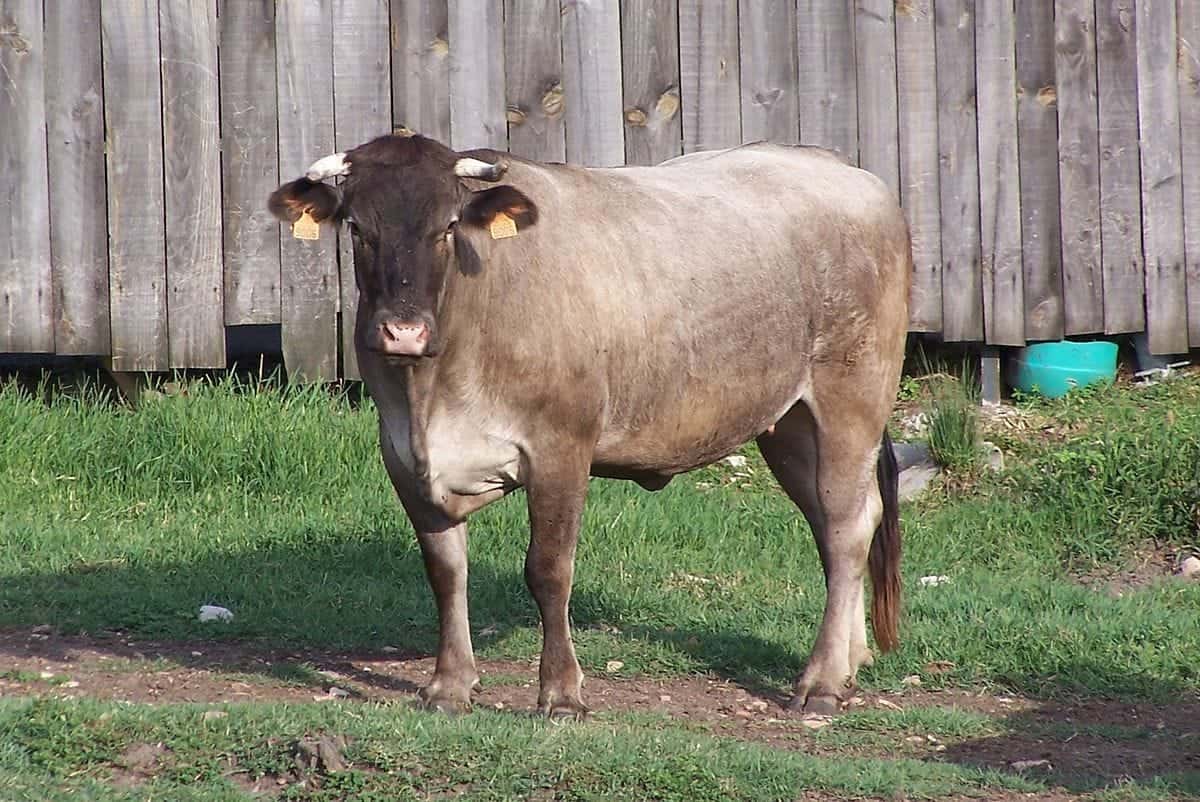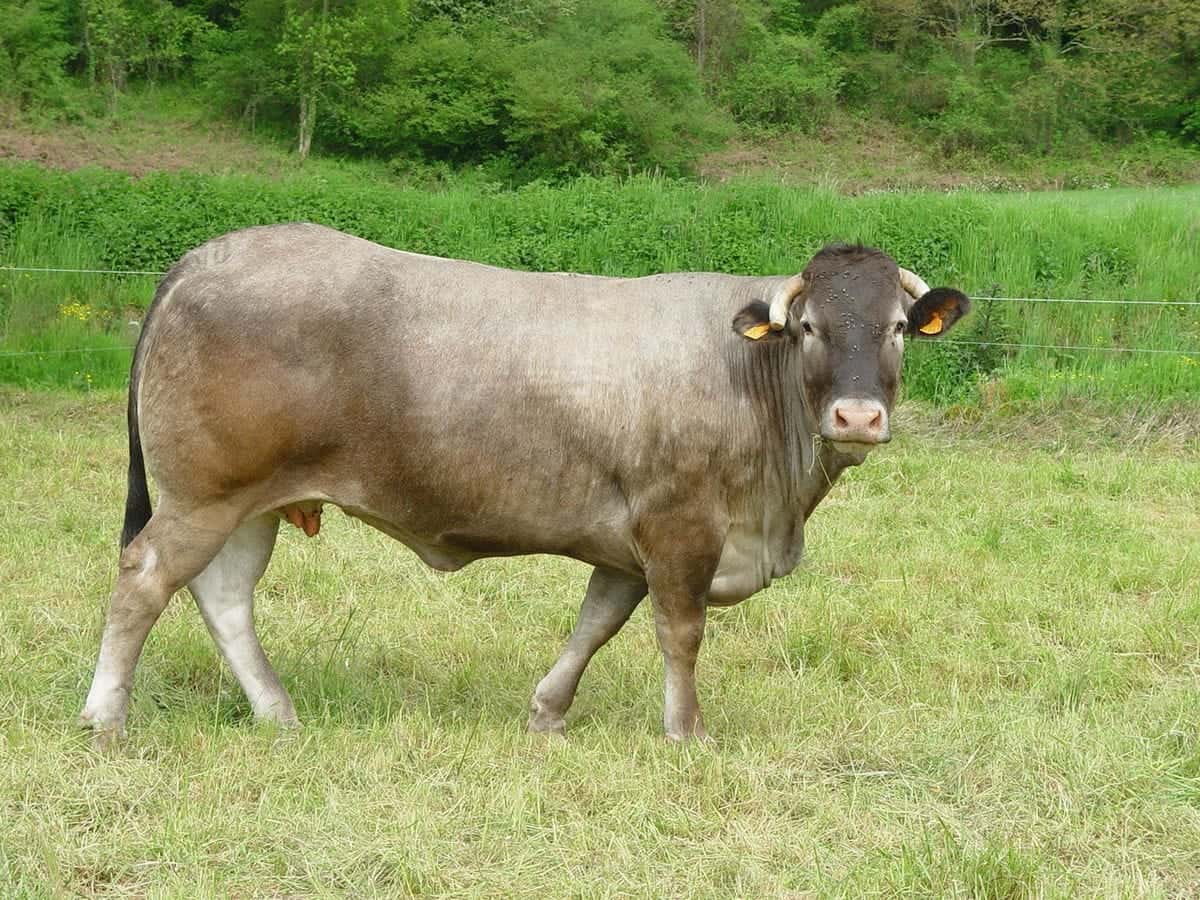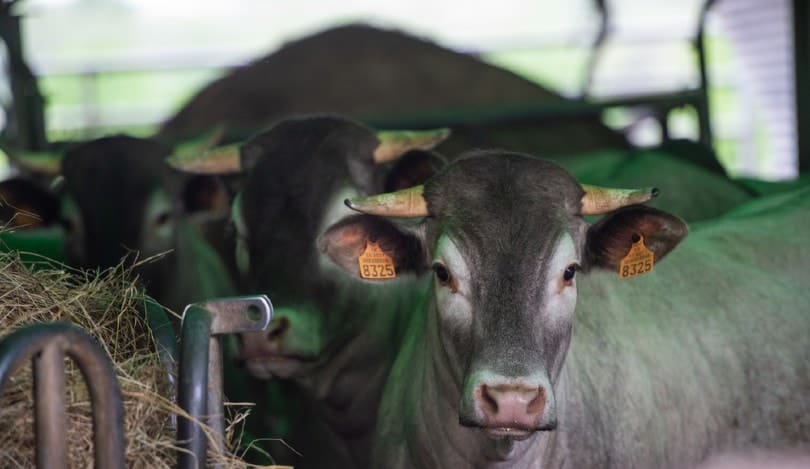The Bazadaise is a French breed of cattle that is commonly used for beef. It is named after the town of Bazas in southwestern France. More specifically, it originates from the low-lying area around the River Garonne.
These cattle are the center of a festival each year, when the newly fattened Bazadaise stock is shown off.

Quick Facts About the Bazadaise Cattle Breed

| Breed Name: | Bazadaise Cattle |
| Place of Origin: | France |
| Bull Size: | 1,100 kg |
| Cow Size: | 750 kg |
| Color: | Grey |
| Lifespan: | Unknown |
| Climate Tolerance: | High |
| Care Level: | Low |
| Production: | Beef, draft |
Bazadaise Cattle Origins
The Bazadaise, or Grise de Bazas, cattle are a traditional draught breed named for the town Bazas, which is located in southwestern France. They are strongly associated with the town, and there is even an annual festival for the cow there.
This cow was likely the result of interbreeding with local cows and others of Spanish origin.
Its herd-book was started in July 1896. The breed was once quite common. In 1940, there was about 60,000 head, for instance. However, after WWII, the breed declined sharply. Agriculture was beginning to become mechanized, and the region largely turned to growing cereal crops.
In 1970, the region was home to only about 700 cows, and efforts were made to conserve the breed. In 2013, there were about 3,400 cows on 140 different farms1.


Bazadaise Cow Characteristics
These cattle have great muscle development and a fine bone structure, which enables them to produce great yields. They usually have a broad back and a large, muscular rump.
These cattle are known for being great mothers. The calves are born rather small but are alert soon after birth. Usually, they only weigh about 35–42 kg at birth. Most calves can walk soon after they are born. Their muscle development becomes apparent at around 2 weeks of age.
About 70% of all calving intervals last for less than 380 days, making these cows great breeders.
Bazadaise cows are natural grazers, so it is not difficult to get them to gain weight. They can typically reach 500 kg by 1 year of age. Their higher level of carcass weight has led to them topping the charts in many countries. They are known for their fine-flavored, low-fat beef.
Uses for Bazadaise Cattle
For the most part, these cattle are known for their fine marbled beef. They are used as beef cows in most situations.
Originally, they were utilized as a draft breed and used to haul cut wood out of the forests. However, they are now largely raised for beef, which is heavily marbled and known for its flavor. They have some of the highest quality beef in the world, though they are not as popular as some other cows out there.
Their carcass yield is high, which makes them quite profitable.
Appearance & Varieties
These cattle are dark to medium grey. Their eye and muzzle are pale in color. Their hooves are typically dark and they have durable horns. Calves are born a light beige color and stay that way until they are about 3 months old.
These cattle are typically quite large. Males can weigh as much as 1,100 kg, while females are closer to 750 kg.
Population of Bazadaise Cattle
These cows are decently rare today and not found much outside their native region of France. At one point, their numbers dropped as low as 700 after WWII. However, they have picked back up, especially after consumers shifted their culinary taste toward a more marbled beef.
These cows can sometimes be found in England, Australia, Belgium, Spain, and Holland. They are difficult to find in the U.S.A. and may need to be imported.

Are Bazadaise Cows Good for Small-Scale Farming?
If you’re looking for a hardy beef cow, this breed may be a good option – if you can find one. They are not common in the U.S.A., which means you may have to import them. They are hardy in climates similar to those found in Europe and are generally adaptable.
These cows are also easy to take care of. They are natural grazers and great mothers, which means they don’t require specialized care.
Featured Image Credit: FreeProd33, Shutterstock
